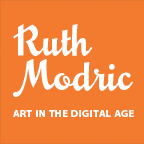Finnegans Wake is not an ordinary book to be read from cover to cover. There is no beginning, middle and end. The book starts in the middle of a sentence and ends 600 pages later in the middle of the same sentence. The language is rich in its construction, and each word might have a double or triple meaning. The book is full of puns, riddles, obscure references, word combinations and foreign languages, all of which need teasing apart before any sense can be made. Symbolism, irony, and the surreal all work together in the narrative–the book is cubism in words.
I was introduced to Finnegans Wake about the same time I started working with Photoshop. The two seemed to make a perfect partnership. Joyce’s chunks of words, phrases, and sentences landed deep in my psyche and churned up a fountain of visual images. I took great pleasure in just reading random phrases. And the imagery that surfaced was meaningful to my way of making art. In my work, the environment doesn’t quite make sense. Objects look real, but may not function as they should. Colors are too much or too little. Life is short, long, bright, dull, happy, sad, and often scary.
FW plays with Freud’s psychological ideas to reveal our deepest concerns that remain hidden from our conscious lives; my aim is to do the same with visual art. In our time, we have all ingested and digested so much of Freud, it just leaks out. Yet, even though the images are appealing on screen, they are still just light on a cold surface. The images need to become printed objects. Once printed on a quality matte paper (currently I use Epson Cold Press Bright), they have the rich and textured look of an intaglio print.
